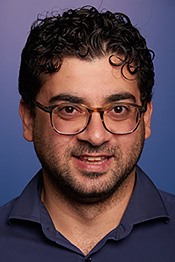Program Information
From DRL to NRL: A First Step Toward Quality-Based Reference Level
F Ria1*, J T Davis2 , J B Solomon1 , J M Wilson1 , D P Frush1 , E Samei1 , (1) Clinical Imaging Physics Group and Carl E. Ravin Advanced Imaging Laboratory, Duke University Health System, Durham, NC, (2) Radiology Department, Duke University Health System, Durham, NC
Presentations
TH-EF-601-6 (Thursday, August 3, 2017) 1:00 PM - 3:00 PM Room: 601
Purpose: Radiologic procedures are optimized based on a benefit-to-risk. However, risk has been the primary focus of radiology optimization and dose monitoring. Such programs are typically based on the concept of Diagnostic Reference Level (DRL). The term “diagnostic” implies image quality, yet DRL refers to radiation dose. The purpose of this study was to expand the concept of DRL to actual diagnostic quality by quantifying the expected level of performance from measured image quality across clinical cases.
Methods: Using an IRB-exempt protocol, noise magnitude values were automatically extracted from an anonymized population of 1904 abdominopelvic (with contrast) and chest (without contrast) CT examinations across two scanner models. The extraction included the protocol information, patient diameter, and dose. The median noise was calculated as a function of patient size within a 25-35 cm range, categorized into 1 cm bins, avoiding variability for bins with a very small number of cases. A Noise Reference Level (NRL) was defined as the median noise values across cases ±20%.
Results: For abdominopelvic cases, the NRL interval was 25-37 HU (median 31 HU). 75% (557 of 745) of cases fell within this interval. The corresponding NRL for chest cases was 10-15 HU (median 13 HU), and 91% (1051 of 1159) of the cases fell within this interval. The cases outside of the NRL range were mostly associated with larger patient sizes.
Conclusion: The NRL derivation was made possible through an image quality monitoring systems. Based on noise measured in real clinical CT images, a NRL was determined for two protocols. This analysis based on noise is a first step towards developing a comprehensive Quality Reference Level (QRL) that includes all aspects of image quality in the prescription of quality imaging procedures.
Contact Email:
